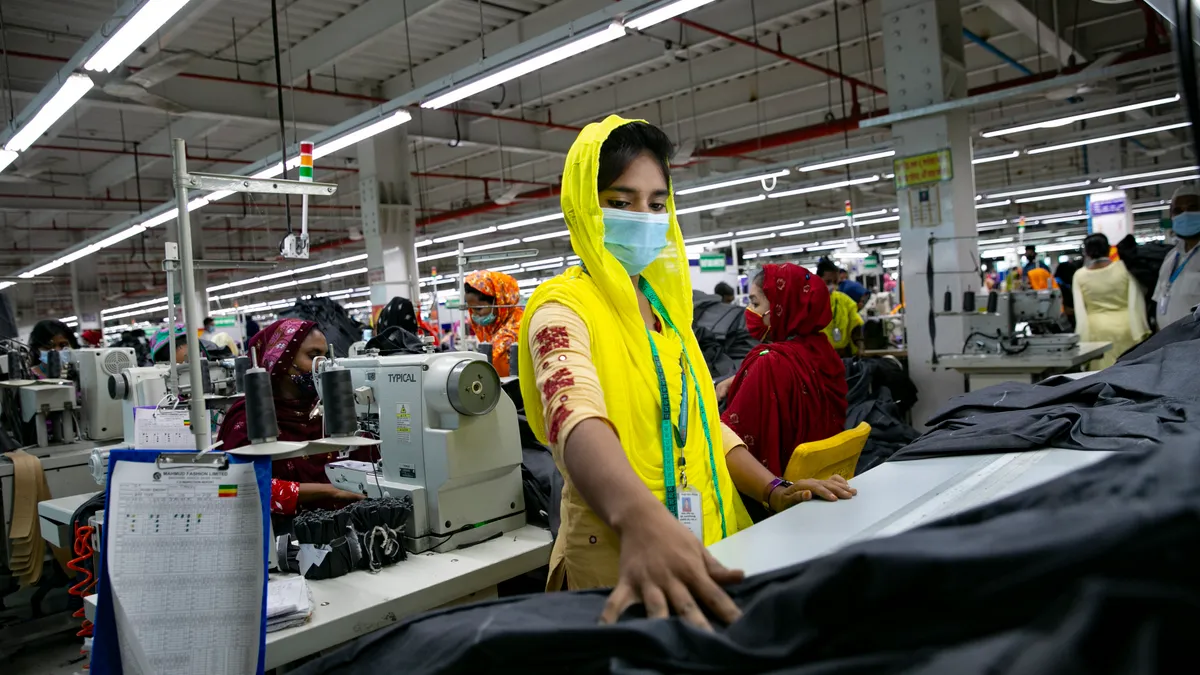Dive Brief:
- Ongoing supply chain challenges could cost North American apparel and footwear brands between $9 billion and $17 billion in lost EBITDA in 2022, according to a new report out Wednesday from Kearney.
- That is a conservative estimate calculated by the report's authors prior to omicron's emergence, meaning the lost profits could be even larger.
- By Kearney's count, just 12% of organizations in the sector are "leaders" in resilience, meaning they have design, distribution and financial agility, among other qualities that can help weather supply chain disruption.
Dive Insight:
Supply chains around the world are still working through bottlenecks along nearly every point in the chain, from raw material production to domestic trucking.
While last year's holiday season didn't bring the system-wide collapse that some feared, retailers and brands had to pay up for inventory, freight, domestic shipping and often for warehouse and other distribution workers in a tight U.S. labor market. With inventory constrained across the industry, many were able to pass costs on to consumers and even expand margins.
This year is full of unknowns, on both the supply and demand side. Many expect supply chain struggles to continue through the year. But the pandemic, and consumers' response to it, will impact both sales and supply chains.
The Kearney report authors wrote of apparel and footwear brands, "At some point over the next 6 to 18 months, they should be able to harvest renewed growth from pent-up demand." More office openings and evenings out will necessitate a wardrobe refresh for many, as the authors point out. But extra demand could exacerbate all of the supply chain backups the industry experienced over the past year.
Given the disruption of the past two years, many in the industry report that supply chain is starting to take a more prominent role in organizations compared to the past.
As firms in the apparel and footwear space try to build resiliency into their supply chains, the Kearney authors point to several key tasks, specifically complexity and SKU reduction, ocean shipping optimization, building redundancy into sourcing, and revamping inventory management to include AI demand planning and data sharing with suppliers.
Kearney also grouped organizations in apparel and footwear by their resilience capabilities, based on their answers to questions like if they redesigned their portfolio for simpler, more modular assortments. (Simple design, as Crocs executives attested last fall, can make shifting production among factories faster and smoother.) Kearney also asked organizations about supply chain visibility, capital access, risk management practices and other key supply chain practices.
From executive surveys, Kearney determined that just 12% of organizations in the sector qualify as resilience "leaders," while 52% were deemed "mainstream" and 36% were described as "laggards."














